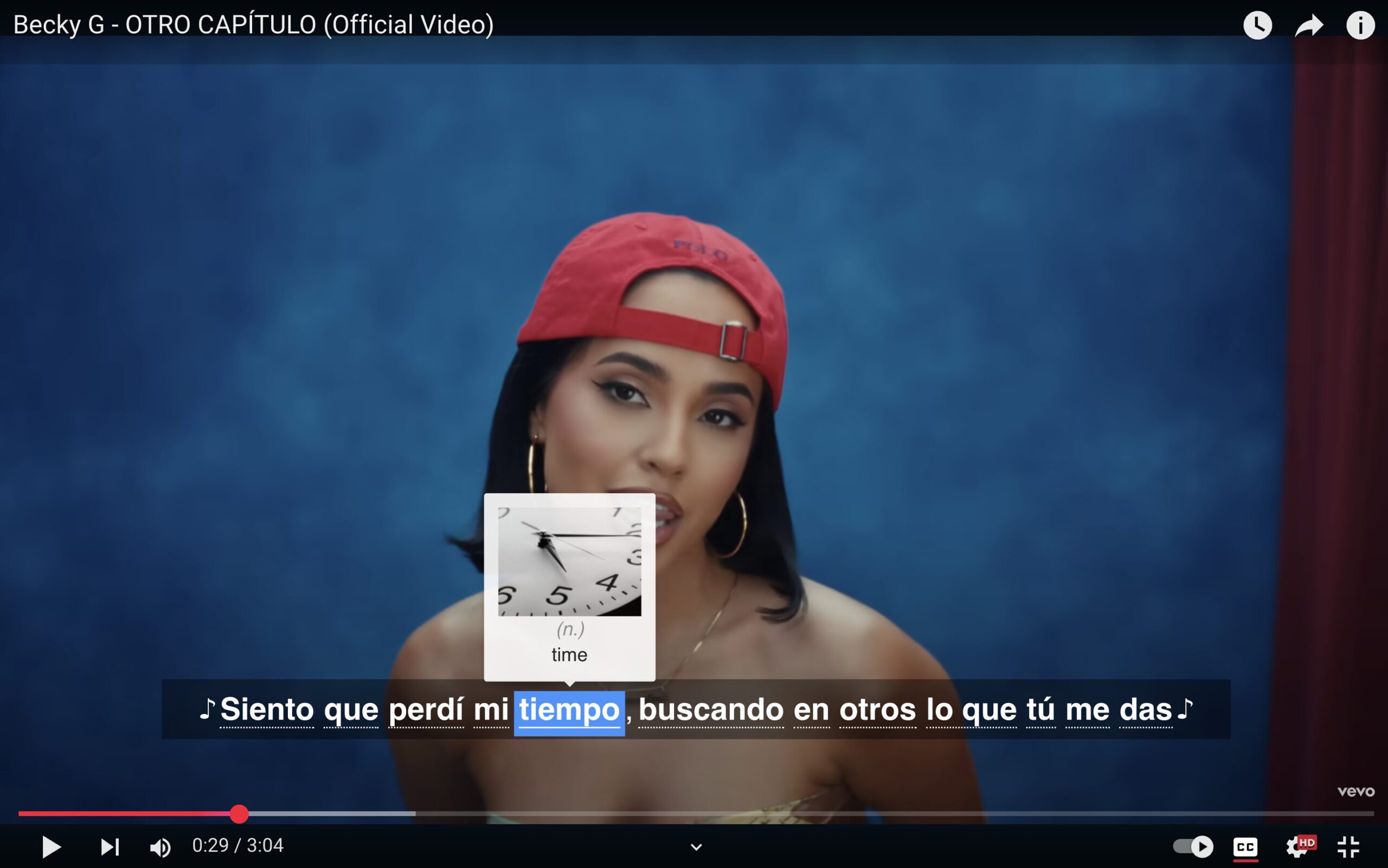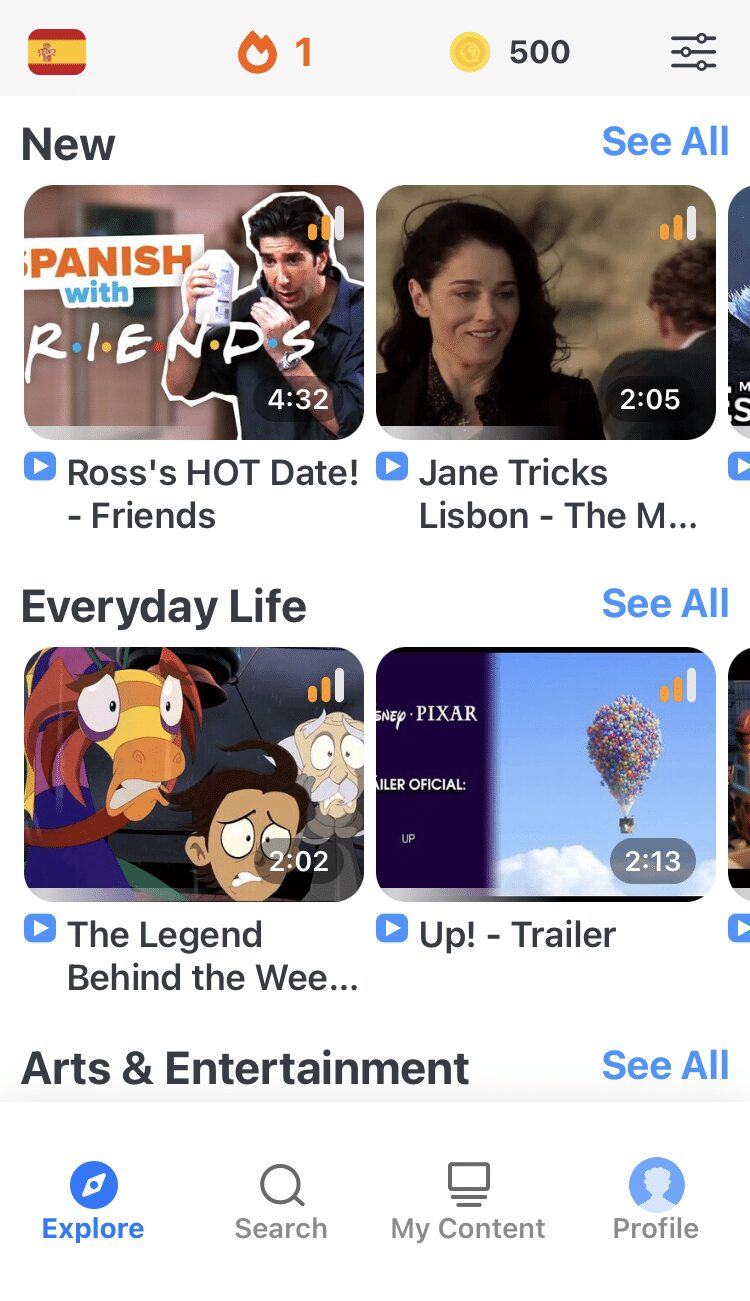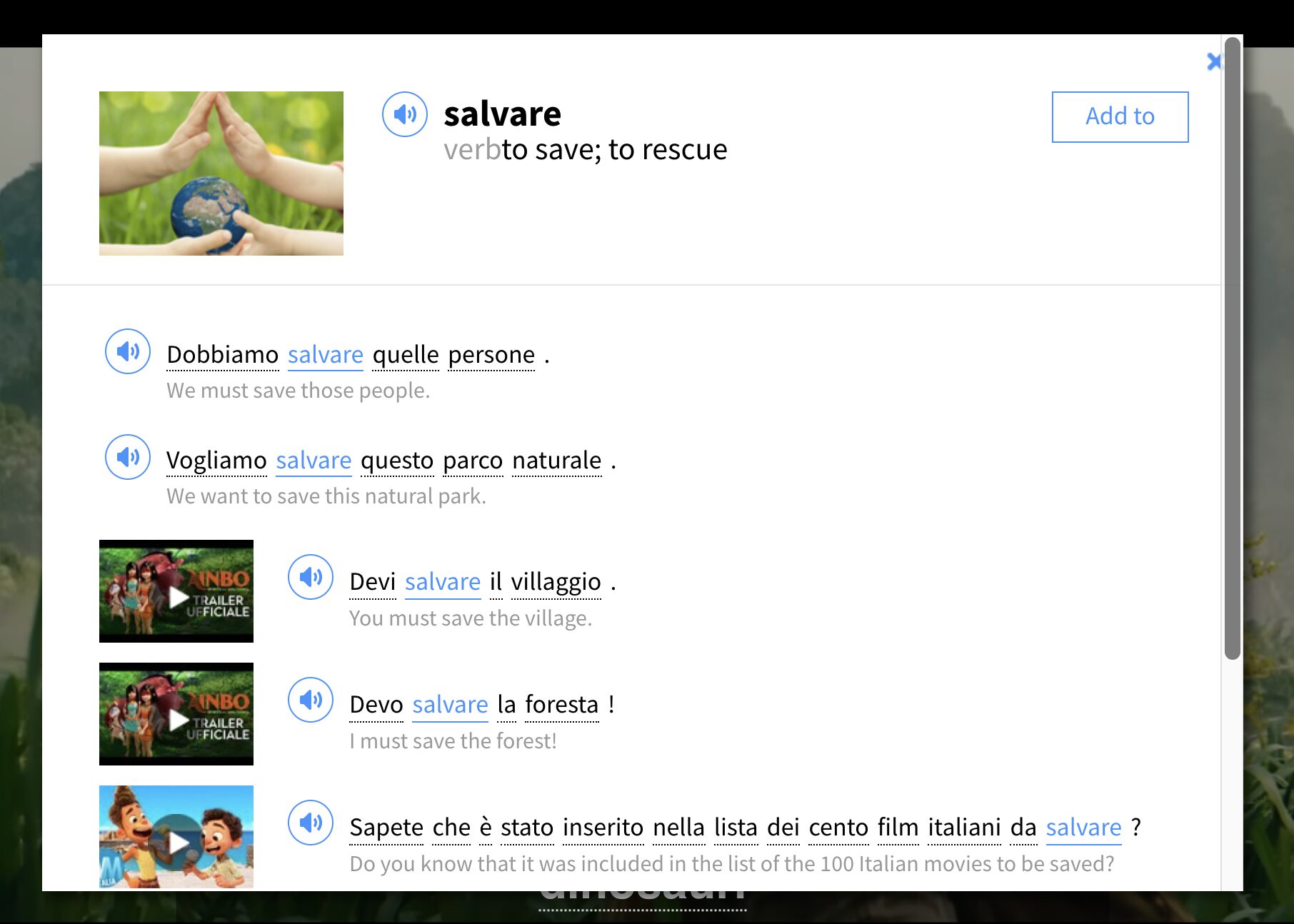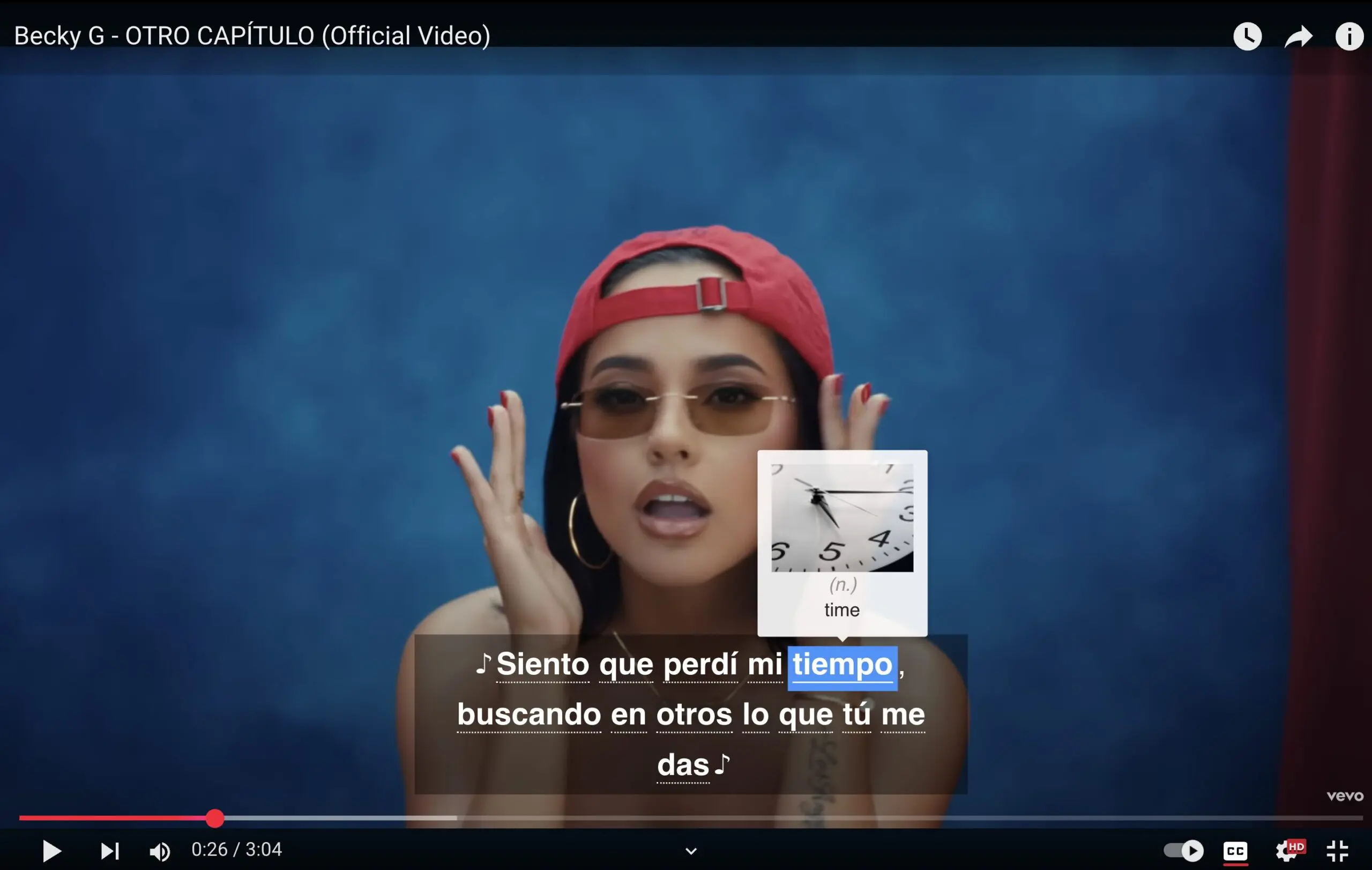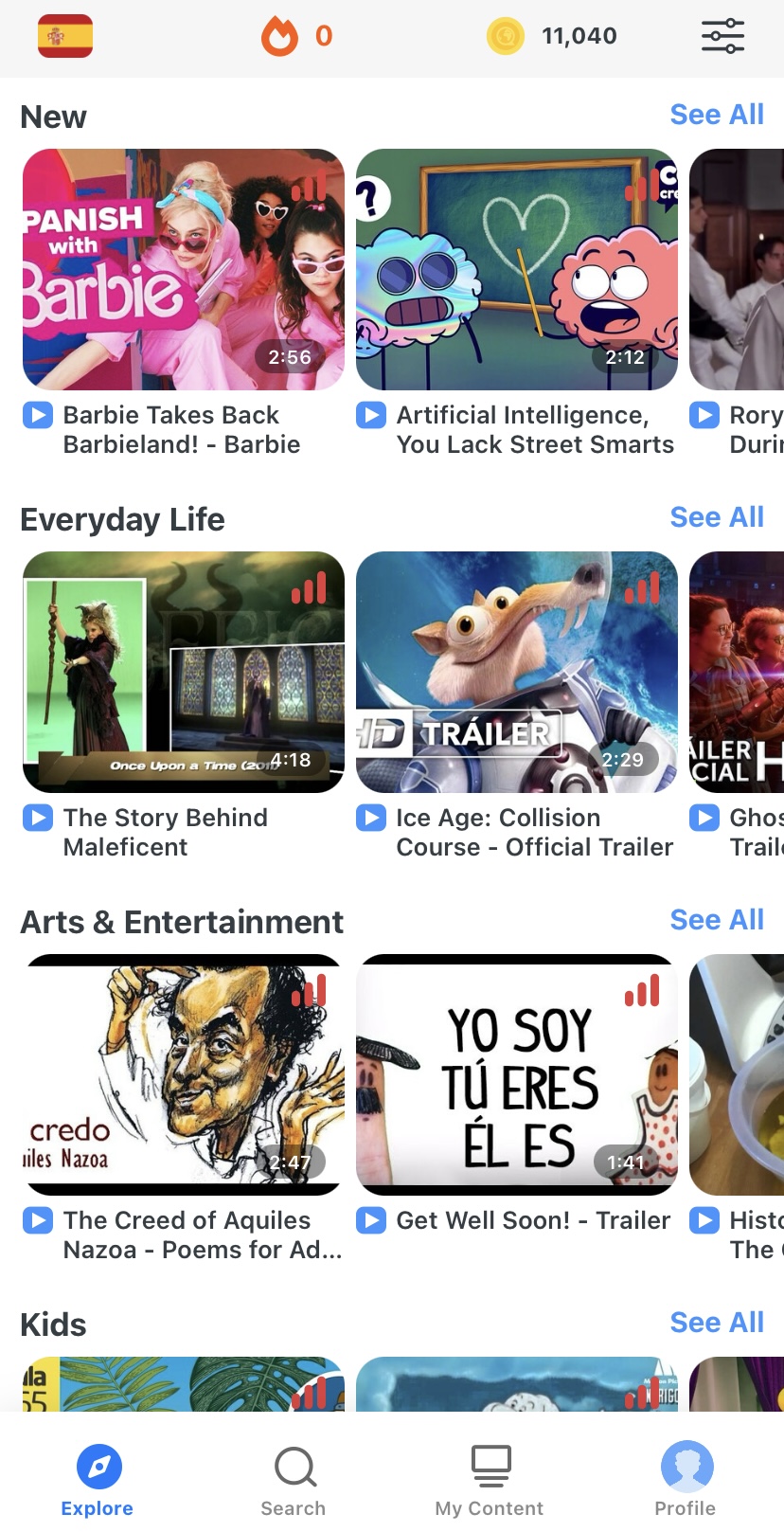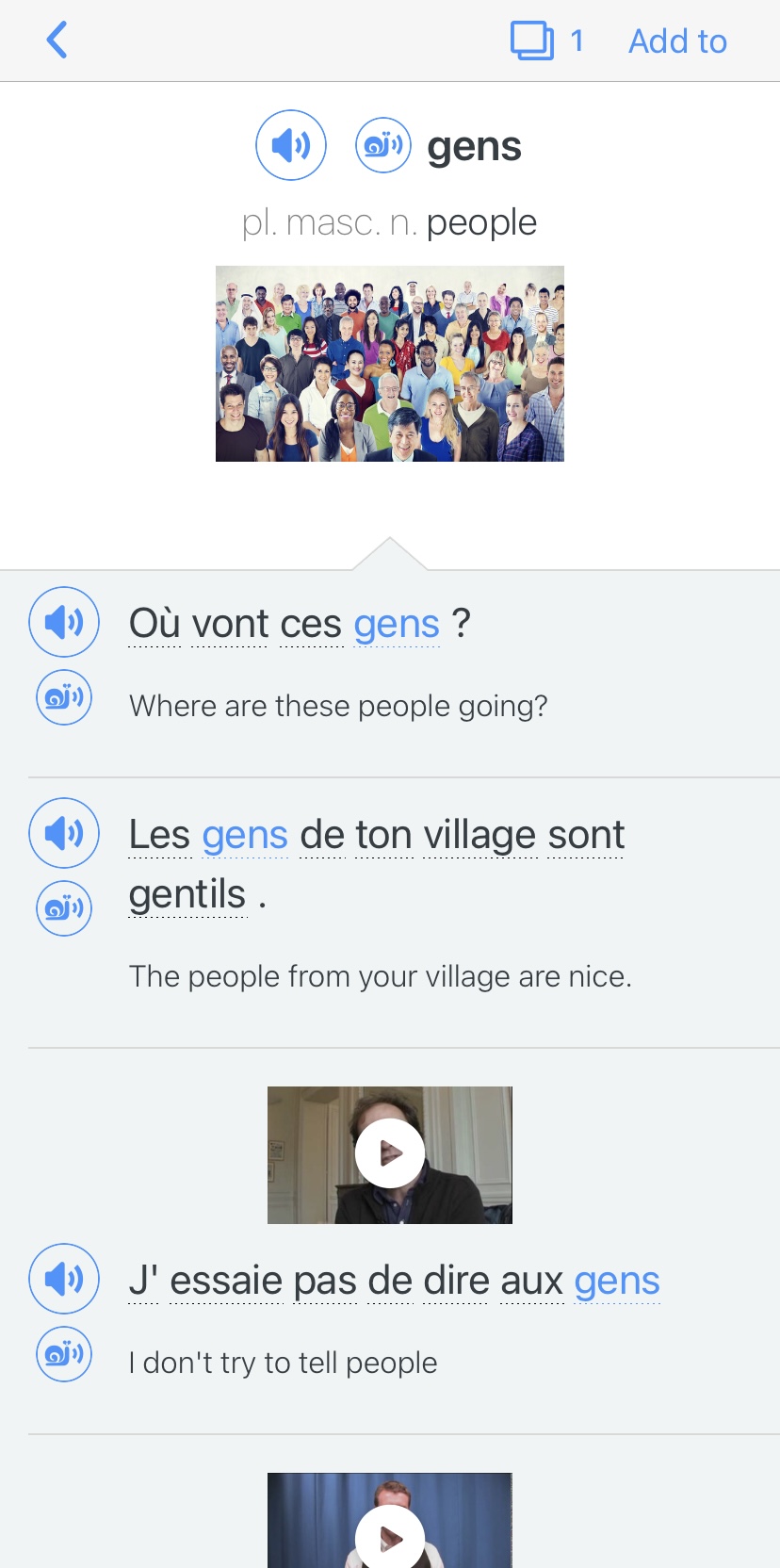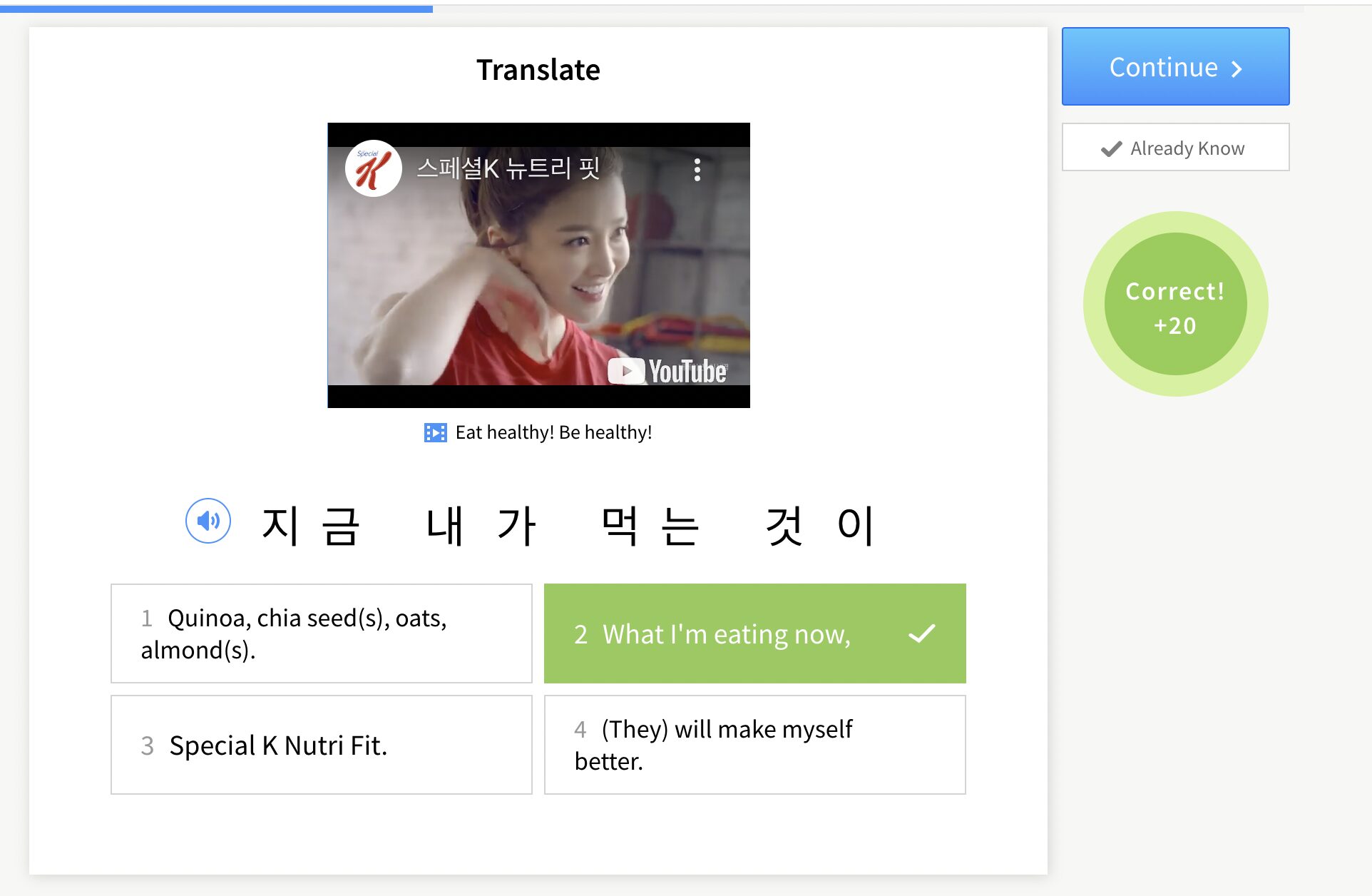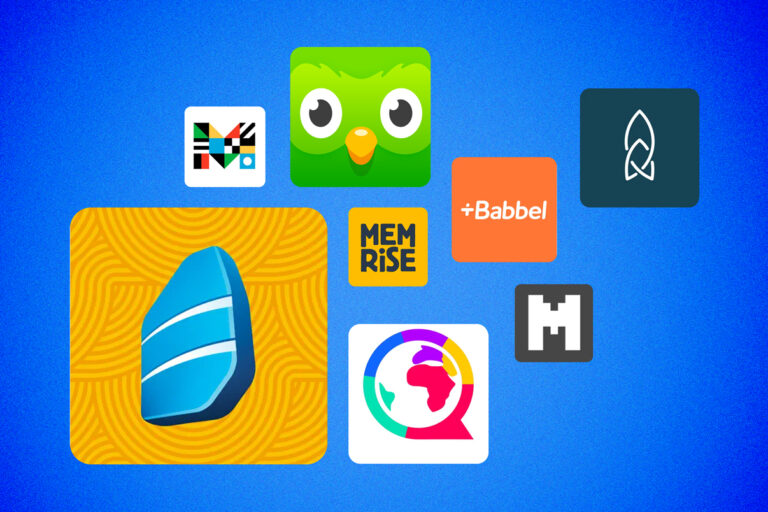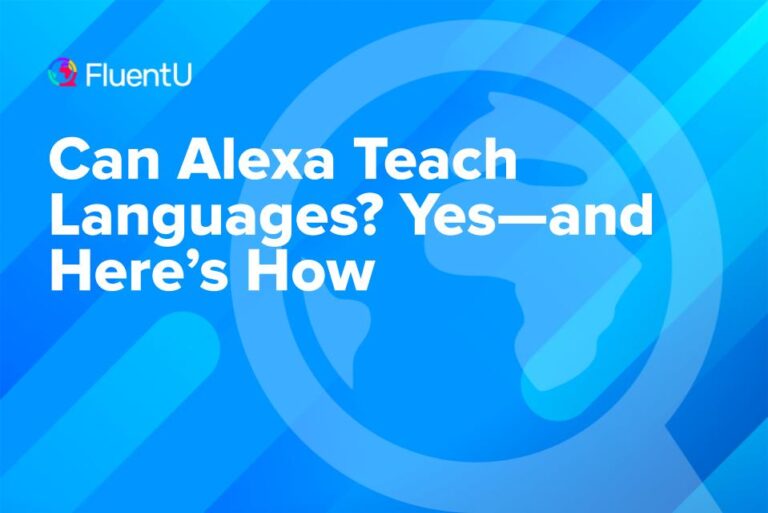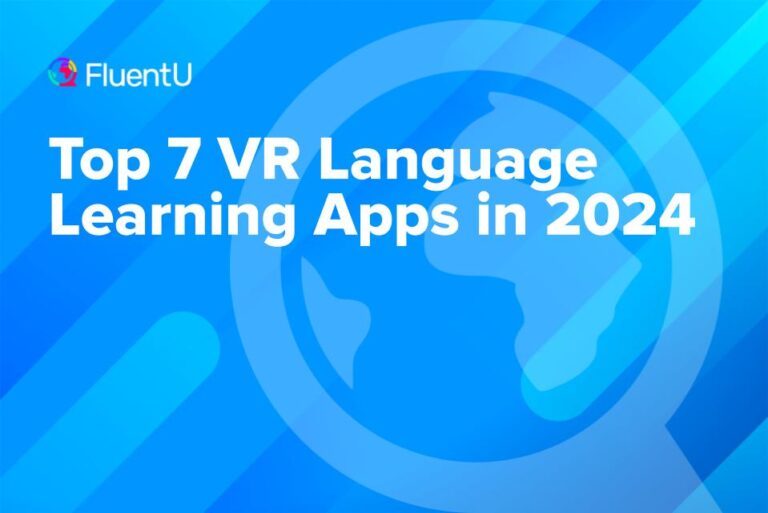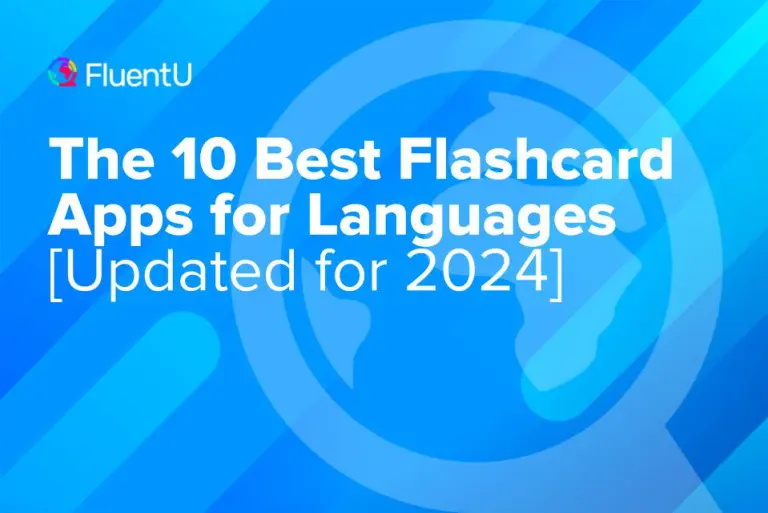Contents
- 1. Arabic: “الببغاء يتعلم الهجاء”
- 2. Chinese: “大耳朵图图”
- 3. French: “Petit Ours Brun”
- 4. German: “Piggeldy und Frederick”
- 5. Italian: “Winx Club”
- 6. Japanese: “サザエさん”
- 7. Korean: “아기공룡 둘리”
- 8. Portuguese: “Turma da Mônica”
- 9. Russian: “Маша и Медведь”
- 10. Spanish: “Pocoyó”
- How to Get the Most Out of Foreign Language Cartoons
- Turn Authentic Content into Language Lessons
- And One More Thing...
10 Entertaining Foreign Cartoons for Language Learning

Sure, you can learn a language by watching movies of the live-action variety or watching all kinds of TV, but if you’re a kid or kid at heart, there’s nothing quite like cartoons to get you some much-needed listening practice.
Below, I’ll show you 10 foreign cartoons in popular languages that you might want to add to your learning repertoire.
Download: This blog post is available as a convenient and portable PDF that you can take anywhere. Click here to get a copy. (Download)
1. Arabic: “الببغاء يتعلم الهجاء”
There are plenty of great Arabic cartoons from all over the Arab world, but “الببغاء يتعلم الهجاء” (The Parrot Learns to Spell) is a particularly good option for language students.
This Kuwaiti show from 2007 is designed as an educational series, aimed at teaching children Arabic. Because of this, it’s a great tool for Arabic students to use to learn the alphabet, pronunciation and basic vocabulary.
The story itself revolves around a parrot family in which the mother is teaching her son about the Arabic language. Along the way, they encounter other characters that include a dictionary and letters of the alphabet.
Episodes are usually around 10 minutes each. The production company, Magic Selection, has conveniently uploaded 29 episodes onto YouTube, so there’s plenty of learning material for you! Still can’t get enough? Check out Magic Selection’s YouTube channel for more cartoons, including series that cover numbers, nature and more.
2. Chinese: “大耳朵图图”
If you’re looking for a great Chinese cartoon, look no further than “大耳朵图图” (Big Ear Tutu).
“大耳朵图图” is a Chinese cartoon produced by Shanghai Animation Film Studio that debuted in 2004. The show is popular with the preschool set, so the vocabulary is relatively simple—perfect for beginning Chinese students!
The main character, Hu Tutu, is a boy with a strong imagination, an inquisitive mind and comically large ears. In most episodes, he has adventures and/or setbacks and learns valuable lessons with the help of his parents.
3. French: “Petit Ours Brun”
If you’re a fan of French cartoons, you’re probably already familiar with “Petit Ours Brun” (Little Brown Bear). If not, it’s high time to check it out.
“Petit Ours Brun” is a French classic. It started in 1975 as a series of stories in a magazine. Then, there were “Petit Ours Brun” books. In 1988, the first“Petit Ours Brun” animated series began, followed by a second animated series in 2003. In 2016, the stories even spawned a live musical comedy, “Petit Ours Brun — Le Spectacle” (Little Brown Bear — The Show). Needless to say, “Petit Ours Brun” is popular.
All of the stories follow the life of a young brown bear as he struggles with standard issues preschoolers encounter as they grow up. While “Petit Ours Brun” is aimed at preschoolers, it’s a good option for all early language learners because it uses simple language and focuses on common scenarios.
The animated series, produced by Groupe Bayard (Bayard Group), has been translated into five languages. Between the two series, there are over 50 episodes. The linked video is a compilation of several episodes.
If you still can’t get enough Petit Ours Brun, you can also check out the official “Petit Ours Brun” page for more information and activities.
Here are more of our favorite French cartoons.
4. German: “Piggeldy und Frederick”
In the world of German cartoons, “Piggeldy und Frederick” (Piggeldy and Frederick) hogs a lot of attention.
“Piggeldy und Frederick” is a West German series that ran from 1973-1985. During that time, over 100 episodes were produced. In the early 1990s, an additional eight episodes were created.
The series follows two little pigs: Piggeldy and his big brother Frederick. Piggeldy is adventurous and asks a lot of questions, which Frederick aims to answer, setting each episode into motion.
If you like “Piggeldy und Frederick,” there are also books and audiobooks, though they’re mostly available from resellers.
While “Piggeldy und Frederick” is a great choice for beginning students looking to learn basic vocabulary and improve their listening skills, more advanced students might want to look at German cartoons for advanced learners.
Check out more great German cartoons here.
5. Italian: “Winx Club”
There are lots of great Italian cartoons out there, but few are quite as magical as “Winx Club.”
“Winx Club,” produced by Rainbow S.r.l. and Rai Fiction, follows magical teenage girls tasked with defending the universe from dark forces.
“Winx Club” premiered in 2004 and still airs today. There are over 180 episodes, each of which is about 23 minutes long. The series is also popular internationally, airing in over 150 countries and spawning countless toys, games, books and movies.
“Winx Club” uses more advanced language than some cartoons, so it probably isn’t best for complete beginners. However, since “Winx Club” has aired in the United States, you might also be able to find English-dubbed versions of the same episodes.
You can watch the English version first to get an idea of what the episode is about before you dive into the Italian version. This will also help you get a handle on the “magical” terminology.
Need more Italian cartoon recommendations? Here are some favorites.
6. Japanese: “サザエさん”
Japanese cartoons are well-known internationally. After all, who doesn’t love anime? And for language learners, this creates an abundance of learning options.
One great option for Japanese learners is “サザエさん” (Sazae-san). This anime series, which debuted in 1969, was adapted from a manga series that debuted in 1946. Since the show’s debut, there have been over 2500 episodes, earning the series the Guinness World Record for longest-running animated show.
“サザエさん” follows the everyday life of a Japanese family, including humorous scenarios related to common activities, like working and maintaining the house.
Besides its nearly endless content, “サザエさん” has a lot to offer language learners. Since it depicts some more traditional aspects of Japanese culture, it’s a helpful way to learn about history. Additionally, since the plot focuses primarily on everyday activities, “サザエさん” can help Japanese students learn common vocabulary words.
Find more Japanese cartoons here.
7. Korean: “아기공룡 둘리”
“아기공룡 둘리” (Dooly the Little Dinosaur) is a well-known Korean cartoon.
Based on a 1983 cartoon, the animated series first aired in 1987-1988. A new “Dooly” series began in 2009.
The series follows a baby dinosaur who acquired magical powers after being abducted by aliens. Naturally, he was then trapped in a glacier, only to unfreeze in modern-day Seoul and live with a human family.
The cute, animated dinosaur Dooly is a very popular character. “아기공룡 둘리” is a good choice for students learning Korean because it’s popular in Korea and depicts fairly routine things (other than the magical dinosaur, of course).
However, do note that it doesn’t always represent the ideals of traditional Korean culture—the series received criticism for being violent and not portraying respect to elders.
For more Dooly content and some reading practice, you can also visit the official website.
There are more Korean cartoons here!
8. Portuguese: “Turma da Mônica”
When it comes to Portuguese cartoons,“Turma da Mônica” (Monica’s Gang) is the gang you want to roll with.
“Turma da Mônica” is an animated series based on a comic by the same name. The comic debuted in 1959, while the animated shorts started to be produced in 1976. The animated shorts were marketed in compilations, though some movies were also produced. Shorts aired on TV in 1999 with more regular episodes in the 2000s. There are toys, books, video games and even an amusement park based on the series.
Stories follow a group of friends in São Paulo. The main characters are usually around seven years old, but in one spin-off, they’re teenagers. Together, they go on various adventures. Since there’s a large cast of characters, these adventures cover a wide variety of themes.
Because this show offers such variety, it’s a good choice for Portuguese students as it will expose you to a wide array of vocabulary. Additionally, the show is popular enough that it will provide you with a conversation starter if you’re ever looking to strike up a conversation with a Brazilian.
More Portuguese cartoon recommendations are available here.
9. Russian: “Маша и Медведь”
If you’re looking for Russian cartoons, there’s no lack of options, but “Маша и Медведь” (Masha and the Bear) is particularly useful for Russian students.
“Маша и Медведь,” produced by Animaccord Animation Studio, follows a little girl called Masha and her bear friend, appropriately called “the Bear.” The show has had plenty of international success, being broadcast in over 100 countries and 25 languages. YouTube videos of the series frequently rack up millions (and sometimes billions) of views.
Episodes were created as seven-minute chunks. However, several of these shorter episodes are often grouped together to make episodes that are around 30 minutes each.
Masha is a mischievous girl who lives in the forest. The Bear does what he can to avert trouble caused by her mischief, but he generally doesn’t succeed and hilarity ensues.
The series is based partly on a children’s folk story, so it’s also a helpful way to learn about Russian cultural heritage. There’s usually not much dialogue, so the series should be approachable for even early beginners.
Plus, “Маша и Медведь” is available on Netflix, offering you a wide variety of subtitling options. You can also listen to the English dubbing if you want to compare and contrast.
10. Spanish: “Pocoyó”
Watching Spanish kids’ videos is a legit way to up your Spanish game, and watching“Pocoyó” (Pocoyo) is a great way to do that.
“Pocoyó” premiered in 2005 and originally used Castilian Spanish; however, due to its international success, you can also find it in many other languages. There have been seven seasons, some of which are exclusive to YouTube. If you still can’t get enough content from this show, you can also find “Pocoyó” movies and video games.
The show follows a curious four-year-old. The series is intended for preschoolers and portrays things that appeal to kids, like picnics, puppet shows and playing games. These scenarios are also valuable for language learners, however, since they show fairly routine situations.
The episodes were originally seven minutes, though they’re frequently regrouped to make 30-minute “episodes” consisting of several shorter episodes.
If “Pocoyó” is right up your alley, you might also enjoy the official website, which offers Spanish-language games, videos, activities and apps.
How to Get the Most Out of Foreign Language Cartoons
If subtitles are available, use them strategically
If subtitles are available in your target language, jackpot! Reading subtitles in your target language can help you connect the spoken and written words and help you understand what words you’re actually hearing.
Not all cartoons have subtitles, but you can find them on specialty programs like FluentU.
Turn Authentic Content into Language Lessons
I’m sure you’ve heard that immersion is the best way to learn a language. But let’s be real—not everyone can drop everything and move to another country. The good news? You don’t have to.
With FluentU, you can immerse yourself in a new language from wherever you are with your laptop, tablet, or phone. It’s like the grown-up version of how we learned our first language, but with tools that make it easier.
FluentU’s Chrome Extension lets you turn any subtitled YouTube or Netflix video into a personalized language-learning experience. That means you’ll learn with authentic content—just as native speakers actually use it.
My favorite part? You can import YouTube videos directly into your FluentU account, so you can learn from them anytime in the app or on your browser.
You can also check out our curated libraries of videos that are handpicked for beginners and intermediate learners featuring music videos, movie trailers, news clips and more!
Each video comes with interactive captions, allowing you to tap any word to instantly see its definition, pronunciation, image, and example sentences.
Want to review? Go to the Vocab section to reinforce key words and phrases. FluentU’s unique quizzes help you practice vocab from the videos with engaging exercises.
FluentU also tracks your progress and reminds you when it’s time to review—so you get a truly personalized learning experience.
Start learning on the FluentU website, or download the app from the App Store or Google Play. Try FluentU for free for 2 weeks!
Watch often
Daily exposure to your target language is useful, and cartoons are excellent tools for this since they’re usually brief. Whether you watch in one sitting or multiple times throughout the day, the more you listen to your target language, the less foreign it will sound.
Don’t hesitate to rewatch your favorite episodes
If one episode is particularly good, go ahead and watch it again. Or watch it again and again. Or even again and again and again, if you’re into it. The more you watch it, the more likely you are to memorize the vocabulary. You might even memorize some of your favorite lines, which you can use as models to help you remember grammar rules.
Watch little snippets whenever you have a few moments
Cartoons usually aren’t hard to follow, so they’re one of the few resources you can easily break into tiny chunks. Whether you don’t have time to watch an entire cartoon in a chunk or simply need a resource to fill in any spare moment, watching snippets from cartoons can give you the benefits of listening practice in a more flexible format.
Talk back to the characters
Cartoons often move slowly enough that there are pauses in dialogue. Use these pauses as opportunities to get a little speaking practice in by talking to the characters. Talk about what they’re doing, give them some advice or tell them what you think of them.
So give the above foreign cartoons a try, and see how your language skills improve!
Download: This blog post is available as a convenient and portable PDF that you can take anywhere. Click here to get a copy. (Download)
And One More Thing...
If you're like me and love learning languages through real-world content, FluentU is a game-changer. With FluentU, you're not just memorizing words—you’re learning how native speakers actually use them.
With our newest feature, you can now bring FluentU’s interactive tools to any subtitled content on YouTube or Netflix—or even import YouTube videos directly into your FluentU account!
You’ll also get access to a huge variety of content in our curated video library, from movie trailers to news clips, music videos, and more. The best part? FluentU makes this native-language content accessible for learners of all levels.
While you watch, you can tap on any word in the interactive subtitles to see a definition, an image, audio, and useful example sentences. Want to practice new words later? Add them to your flashcards with one click. No more pausing to look up and write down new words!
And FluentU helps you actually remember what you learn with personalized quizzes, plenty of example sentences, and extra practice with the words you find difficult.
Ready to start learning in a more natural, immersive way? Try FluentU on your computer or tablet, or download the FluentU app from the App Store or Google Play. Click here to take advantage of our current sale! (Expires at the end of this month.)
